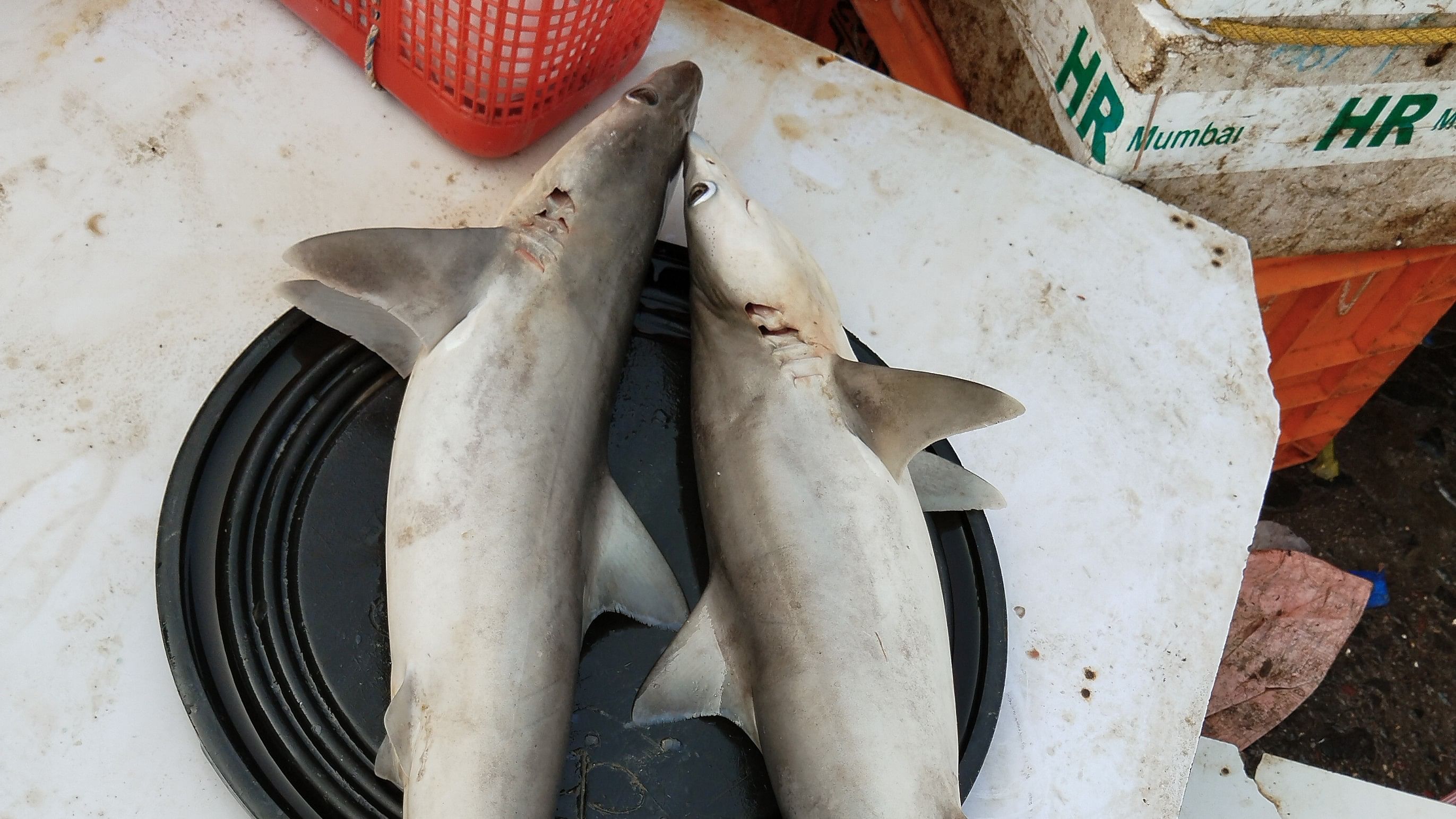
Milk shark
Could the growing interest in trying traditional or indigenous cuisine at restaurants be disadvantageous to India’s shark and ray populations? A new study, ‘Regional hotspots and drivers of shark meat consumption in India’ that surveyed 2,649 seafood restaurants across ten coastal states and union territories, found that Goa and Tamil Nadu alone accounted for 70% of all restaurants serving shark meat. Nine per cent of all seafood restaurants advertised meat.
An alarming trend
The consumption of sharks and rays in India is not new. However, it was historically limited to the poorer sections of society, including coastal and tribal people. This trend has been changing. Tourists and middle and upper-class domestic consumers now prefer this meat.
The study found close to 251.6 tonnes of shark meat sold every year in India’s restaurants, with Goa selling the most (35.8%), followed by Tamil Nadu (34.6%) and Maharashtra (4.6%). What’s worrisome is the evidence of new and evolving consumption patterns in states like Goa. Of all the restaurants (with online menus) that were surveyed, those in Goa top the list - the demand was driven by locals (63%) and by mostly foreign tourists (60%).
146 phone interviews (in all sampled states) and 21 in-person interviews (in Goa only) were conducted. The majority of the interviewees in Goa were from medium-priced restaurants. Lead author Divya Karnad, assistant professor in the Department of Environmental Studies, Ashoka University, explains this new enthusiasm for meat as a larger trend of discovery, or re-discovery of indigenous ingredients, ongoing in the Indian culinary space.
Most interviewees explained that elasmobranch meat was a sign of traditional coastal cuisine and a symbol of authenticity. “Just as celebrity chefs are talking about forgotten vegetables, and the government is promoting millets, the idea of eating a traditional dish, such as Shark Ambotik, is a symbol of experiencing a culinary culture or heritage to some people,” she states.
Talking about the motivations driving this trend, Karnad says restaurant owners/managers in Chennai and Goa believed that using authentic shark meat and advertising it on their menus was a way to signal to customers that they were serving traditional recipes and their cooks were trained or had the cultural background to be able to use such unusual meats.
Most restaurants surveyed needed a deeper understanding of the elasmobranch species while listing it on their menu. For example, a majority (82%) of the interviewees did not distinguish elasmobranch species and preferred baby sharks, that is, small-bodied and juveniles of large-bodied sharks.
The authors elaborated on how those interviewed in Chennai and Puducherry expressed diners’ preference for milk sharks (Rhizoprionodon acutus) but could not distinguish between the milk shark and several similar-looking species.
They warn that shark biology cannot sustain even this demand. The threat to juveniles could enhance the decline of large-bodied species. “Many sharks give birth to young and do not have thousands of eggs like other fishes. They cannot be eaten at the same rates as other fishes,” adds Karnad.
Steps to sustainability
In May 2022, a friend mentioned having sharks on the menu. Having roots in the coastal region, I was yet new to shark and ray meat dished out at parties in a city like Bengaluru.
“In our state (Tamil Nadu), preparing shark meat at home is a regular affair. A tradition even the next generation, now residing in other cities like me, continues. I know of my grandmother talking of its benefits to pregnant or lactating mothers,” she explained.
The authors say this trend can change when consumers know the heavy metals and toxins among some high-trophic elasmobranchs.
“Some people, women after childbirth and their families are understandably desperate to meet the needs of a newborn child. But when eating shark species that concentrate heavy metals, they could be doing more harm than good to their babies. When we have explained this to the older generation (the grandparents), it has typically helped to stop shark meat purchases,” says Karnad.
Similar responses were expressed by surveyed restaurant owners, too. Though 34% of respondents felt they could not substitute shark meat, which would impact their profits and deviate from its cultural associations, ten restaurants had stopped serving shark meat because it was expensive or had no demand.
Only two interviewees reported using alternative seafood. One participant even felt consumers would give up shark meat consumption if they knew the health implications.
Karnad says that when the conservation and the potential health implications of eating certain species of sharks were explained, the restaurant owners/managers reacted more to the health concerns. “That some shark species concentrate heavy metals in their tissues worried them, and they would reconsider serving shark meat,” she adds.